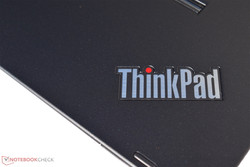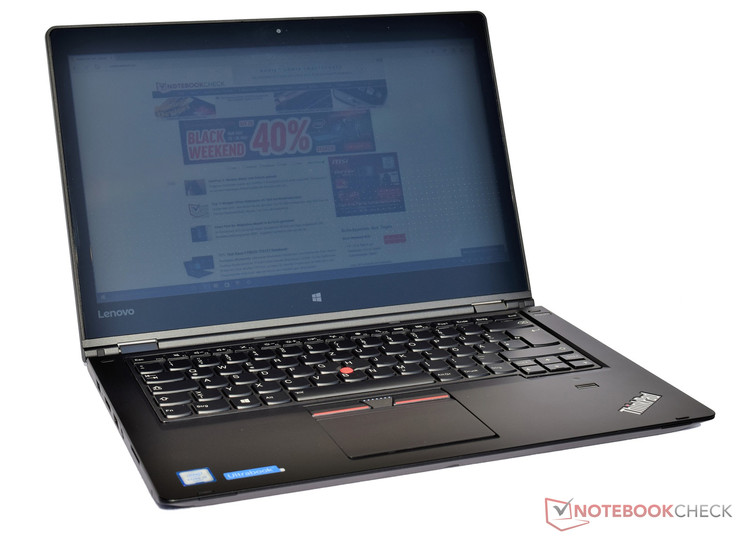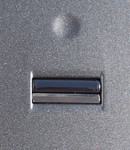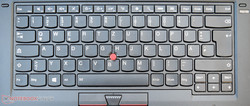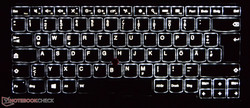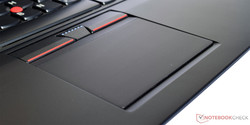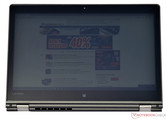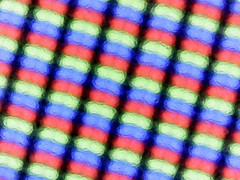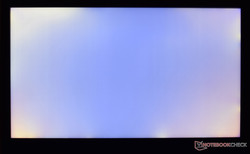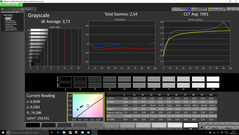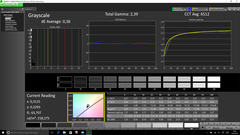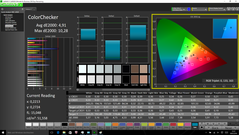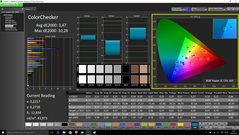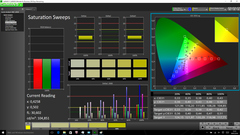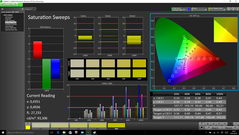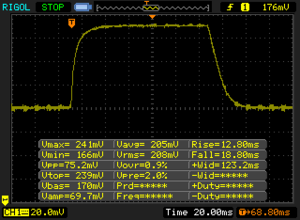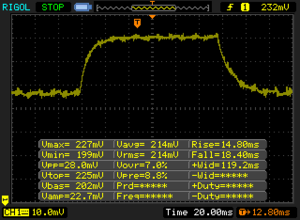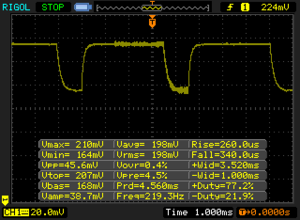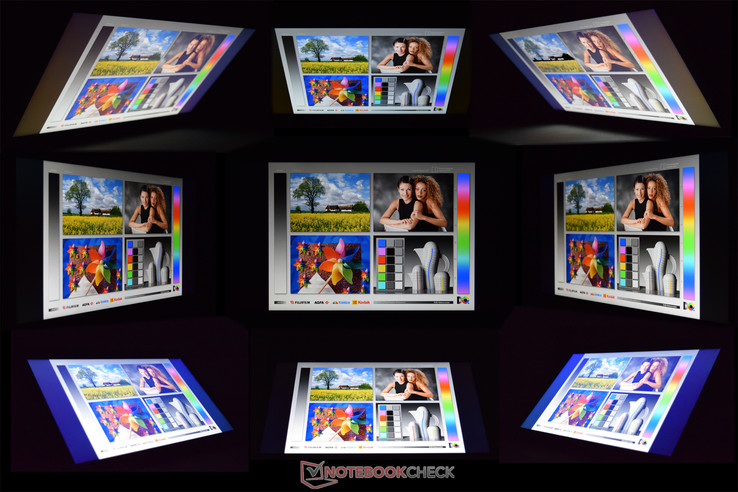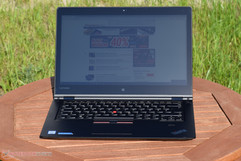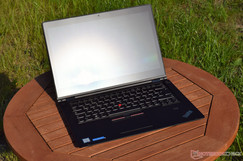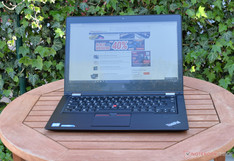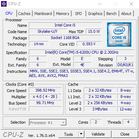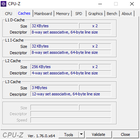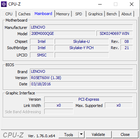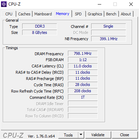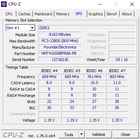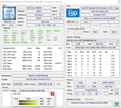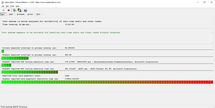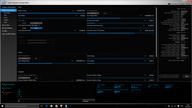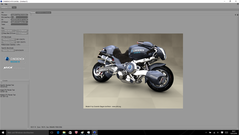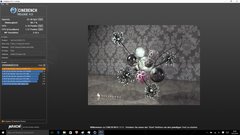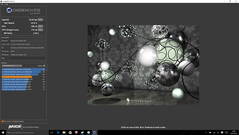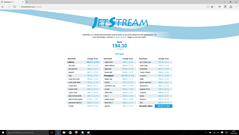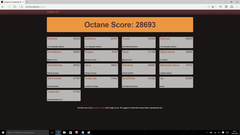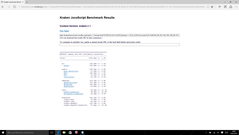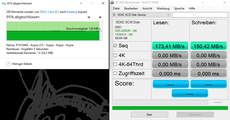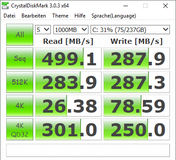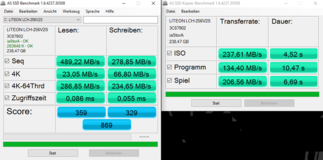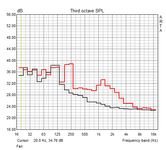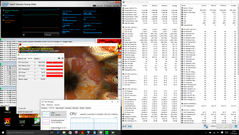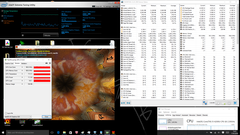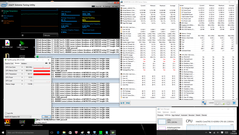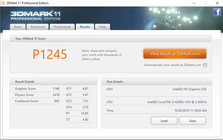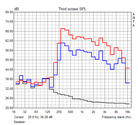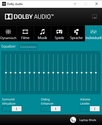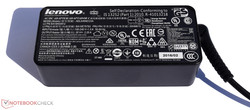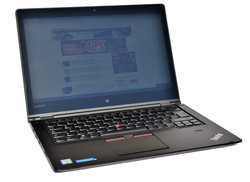Lenovo ThinkPad Yoga 460 Convertible Review

For the original German review, see here.
Lenovo now has a 14-inch device in its lineup that is once again situated in the professional field with the ThinkPad Yoga 460. The convertible is comparatively expensive, and it is therefore not really aimed at students. Lenovo primarily wants to convince customers from the business sector with security features, such as a fingerprint scanner. Thus, Lenovo follows a different concept than with the predecessor that barely provided any security features.
Lenovo offers the ThinkPad Yoga 460 in two base configurations that can be configured freely in the further course. The cheapest device with an Intel Core i5-6200U, 4 GB of DDR3 RAM and a hybrid hard drive made up of 500 GB + 8 GB of cache costs around 1139 Euros (~$1294). Our review sample sports an Intel Core i5-6200U and 8 GB DDR3 RAM. The system storage is a 256 GB SSD. This configuration boosts the price of our review sample to approximately 1300 Euros (~$1477). Lenovo demanded these prices at test time in its online shop. The Intel Core i7-6600U is the strongest CPU available for Lenovo's ThinkPad Yoga 460.
We focus on 13 and 14-inch business devices for comparison in this review. Consequently, the following devices are suitable for comparison and will be recurrently mentioned in the test:
Overview of comparison devices:
- Lenovo ThinkPad Yoga 14 (1399 Euros, ~$1590)
- Lenovo ThinkPad X1 Yoga ($2000)
- Lenovo Yoga 500-14ISK (769 Euros, ~$874)
- Acer Aspire R14 R5-471T-79GQ (1099 Euros, ~$1249)
- HP Spectre x360 13 (1200 Euros, ~$1363)
- Acer Aspire R13 R7-372T-746N (1399 Euros, ~$1590)
Case
The design of the ThinkPad lineup is unmistakable - one look is enough to see that it is a high-quality ThinkPad product. A silver-colored "ThinkPad" logo adorns the device's display bezel and base unit. The "i" dots in both logos serve as status LEDs and emit subtle red lights. The build of Lenovo's ThinkPad Yoga 460 is very good. Everything fits tight and nothing wobbles or clatters. The square device can be used in four different modes (Laptop, Stand, Tablet and Tent). However, it is not light with a weight of 1.8 kilograms. That leads to the question of who would want to permanently hold the device in their hands. This mode will sooner be used when the device lies flat on a table. Both 360-degree hinges enable this mode. They make a solid and quality impression and keep the display firmly in the desired position. It is not possible to open the lid with only one hand. Minor rocking is evident during touch inputs in Laptop Mode. The system automatically adapts the settings to the selected modes when changing the mode and locks the keyboard accordingly to prevent accidental inputting. Lenovo integrates a clever concept for this: When the screen is tilted by 180 degrees, the keyboard's lift and lock automatic function is enabled, and consequently the keyboard bezel is lifted and the keys are locked. This also reduces the risk of damaging the keyboard on a rougher surface.
At first glance, it looks like Lenovo relies on plastic. However, that is deceptive because the casing is carbon-fiber reinforced. That makes it robust, and it withstands even the roughest conditions in outdoor use. Twisting the base is only possible with a lot of force. The display can be warped by a few millimeters, which then also leads to visible color deviations on the screen. The base barely dented in the pressure test. Wave formations were only visible on the screen when pin point pressure was applied to the display.
We can conclusively say that the casing presents good qualities, and that primarily the keyboard's sophisticated lock mechanism has been implemented well.
Connectivity
All interfaces are situated on the device's left and right. The distribution is good on the left and there is enough room. It could sometimes get tight on the right, where HDMI, mini-DisplayPort and two USB 3.0 ports are placed right beside each other. Lenovo's ThinkPad 460 sports a total of three USB 3.0 ports. That is average for this device category. A docking station port is not installed on the underside. However, Lenovo treats the Yoga 460 to a OneLink+ port on the left that enables end users to connect Lenovo's ThinkPad OneLink+ Dock docking station via a cable. The number of existing ports can thus be expanded considerably. The memory-card reader supports all common formats (MMC, SD, SDHC, SDXC).
Buyers will not find an optical drive. Lenovo offers users who depend on mobile Internet connections the option of configuring the device with a Huawei ME906S (114 Euros, ~$129) or Sierra Wireless EM7455 by Qualcomm (156 Euros, ~$177).
Communication
Intel's Dual Band Wireless-AC 8260 module takes care of wireless communication. The Wi-Fi module's spec sheet reveals that Bluetooth 4.2 is supported. 867 Mbit/s is the maximum theoretical gross transmission rate for this Wi-Fi module in 802.11ac operation (dual-stream). We simulated an ideal scenario with a Linksys EA8500 router in the test and measured a reception rate of 622 Mbit/s and transmission speed of 421 Mbit/s. Lenovo's ThinkPad Yoga 460 places itself above the average with these rates. Cabled Internet connections are possible via the OneLink+ interface with a corresponding adapter.
Security
The security aspect in business devices should not be neglected. Lenovo's ThinkPad Yoga 460 features a fingerprint scanner, Trusted Platform Module (TPM) and Kensington lock slot. Furthermore, it is possible to use the anti-theft software "Computrace" with Lenovo's ThinkPad Yoga 460. This security option is found in the BIOS. It is a software and hardware-based solution by Absolute Software. Lenovo does not optionally offer any more hardware security options for the ThinkPad Yoga 460. Security software in the form of McAfee (Internet Security LifeSafe), Norton (Security Premium/Deluxe) or Absolute LoJack International (Computrace) with various runtimes (up to 4 years depending on the offer) can be added to the order list.
Accessories
Lenovo ships the ThinkPad Yoga 460 with a quick-start guide and a small power supply. It is also possible to expand the ThinkPad via the OneLink+ port. The manufacturer offers the option of expanding the device's interfaces via the OneLink+ docking station. The station is priced at 213 Euros (~$242). A slightly cheaper alternative is the OneLink+ VGA/RJ45 adapter for just below 33 Euros (~$37).
Operating System

Lenovo exclusively sells the ThinkPad Yoga 460 models with Microsoft's Windows 10 64-bit editions. The customer can only choose between a Home and Professional version. The two versions have a price difference of 76 Euros (~$86). We would, however, recommend using Microsoft's Windows 10 Professional in productive environments.
Maintenance
The absent service hatch makes maintaining the device difficult. The installed hardware components can only be accessed by removing the base unit's entire underside. In addition to various screws, some tight-fitted plastic hooks have to be released. We did not want to risk that with our shop device. Replacing the battery is only possible when the device is opened.
Warranty
Lenovo only offers a 12-month warranty on the ThinkPad Yoga 460. It is possible to extend this period up to three years for a one-time payment of 234 Euros (~$265). Additional accidental damage protection can also be covered for the three years and boosts the price to 376 Euros (~$427).
Input Devices
Keyboard
The keyboard in Lenovo's ThinkPad Yoga 460 is perfect for prolonged typing sessions. The sleek chiclet keys are lightly concave and are spaced at approx. 3 millimeters. The pressure point is very palpable despite the short drop, and it provides a good feedback. The lettering of the single keys is good and does not make an overly cramped impression. The subtle backlight supports the user in dark work environments. The single keys are fitted tightly and do not clatter. The keys' stroke noise is agreeably quiet, and it will not distract co-workers. The keyboard bezel lifts when changing to Tablet Mode, and the keys are locked. That prevents accidental inputs, and the keyboard is also protected against damages.
Touchpad/TrackPoint
Lenovo installs both a ClickPad and TrackPoint in the ThinkPad Yoga 460. The ClickPad's input surface area is 9 x 5.5 centimeters. Although this area is sufficient, a slightly bigger input surface would have been desirable. Inputting, e.g. multitouch inputs, is smooth and accurate. However, problem zones are found in the corners and along the edges. The ClickPad is a bit sluggish here. Three dedicated keys for using the TrackPoint are incorporated above the ClickPad. It functioned impeccably and the mouse cursor could be moved quickly and accurately over the screen.
Touchscreen
Lenovo's ThinkPad Yoga 460 sports a 10 point multi-touchscreen. Inputs are implemented quickly and instantaneously up into the corners. Lenovo also treats the ThinkPad Yoga 460 to a ThinkPad Pen Pro that enables precise inputs - no visible aberrations were noticed even in the lateral areas. It is an active stylus that detects pressure levels. A touch sensitive Windows logo that is situated in the center below the touchscreen can be used as a Windows key.
Display
Lenovo relies on a 14-inch IPS touchscreen with a native resolution of 1920x1080 pixels for the ThinkPad Yoga 460. That equals a pixel density of 157 PPI. Lenovo describes the surface as matte and anti-glare. That is true to some extent since other touchscreens are considerably more reflective than the one here. However, we would call the surface semi-matte. The panel has an average brightness of 242.2 cd/m². An illumination of 92% is good, but the former Lenovo ThinkPad Yoga 14 achieved slightly better rates. Very visible backlight bleeding is seen at the edges on a completely black image. However, they are not annoying in routine use. Lenovo's ThinkPad Yoga 460 takes third place behind Acer's Aspire R13 R7-372T-746N and HP' Spectre x360 13 with this screen.
| |||||||||||||||||||||||||
Brightness Distribution: 88 %
Center on Battery: 238 cd/m²
Contrast: 850:1 (Black: 0.28 cd/m²)
ΔE ColorChecker Calman: 4.91 | ∀{0.5-29.43 Ø4.79}
ΔE Greyscale Calman: 3.72 | ∀{0.09-98 Ø5}
62.85% sRGB (Argyll 1.6.3 3D)
39.81% AdobeRGB 1998 (Argyll 1.6.3 3D)
43.51% AdobeRGB 1998 (Argyll 3D)
63.3% sRGB (Argyll 3D)
42.11% Display P3 (Argyll 3D)
Gamma: 2.54
CCT: 7091 K
| Lenovo ThinkPad Yoga 460-20EM000QGE a-Si TFT-LCD, IPS, LED, 1920x1080 | Lenovo ThinkPad Yoga 14 IPS, 1920x1080 | Lenovo Thinkpad X1 Yoga 20FQ-000QUS IPS, 2560x1440 | Lenovo Yoga 500-14ISK a-Si TFT-LCD, 1920x1080 | Acer Aspire R14 R5-471T-79GQ IPS, 1920x1080 | Acer Aspire R13 R7-372T-746N IPS, 2560x1440 | HP Spectre x360 13-4104ng IPS, 2560x1440 | |
|---|---|---|---|---|---|---|---|
| Display | 59% | -2% | -12% | 61% | 54% | ||
| Display P3 Coverage (%) | 42.11 | 68.1 62% | 41.31 -2% | 36.92 -12% | 69.6 65% | 66.8 59% | |
| sRGB Coverage (%) | 63.3 | 97.2 54% | 61.3 -3% | 55.4 -12% | 98 55% | 92.8 47% | |
| AdobeRGB 1998 Coverage (%) | 43.51 | 70.2 61% | 42.75 -2% | 38.15 -12% | 70.7 62% | 67.3 55% | |
| Response Times | -5% | 5% | -68% | -2% | 34% | ||
| Response Time Grey 50% / Grey 80% * (ms) | 33.2 ? | 38 ? -14% | 36 ? -8% | 80 ? -141% | 36 ? -8% | 24 ? 28% | |
| Response Time Black / White * (ms) | 31.6 ? | 30.4 ? 4% | 26 ? 18% | 30 ? 5% | 30 ? 5% | 19 ? 40% | |
| PWM Frequency (Hz) | 220 ? | 219 ? | 217 ? | 1000 ? | |||
| Screen | -6% | -0% | -12% | -4% | 37% | 16% | |
| Brightness middle (cd/m²) | 238 | 286 20% | 284.7 20% | 234 -2% | 215 -10% | 320 34% | 324 36% |
| Brightness (cd/m²) | 243 | 274 13% | 272 12% | 209 -14% | 203 -16% | 308 27% | 324 33% |
| Brightness Distribution (%) | 88 | 90 2% | 89 1% | 82 -7% | 85 -3% | 91 3% | 90 2% |
| Black Level * (cd/m²) | 0.28 | 0.3 -7% | 0.383 -37% | 0.22 21% | 0.25 11% | 0.17 39% | 0.34 -21% |
| Contrast (:1) | 850 | 953 12% | 743 -13% | 1064 25% | 860 1% | 1882 121% | 953 12% |
| Colorchecker dE 2000 * | 4.91 | 5.62 -14% | 5.24 -7% | 6.3 -28% | 5.04 -3% | 3.18 35% | 4.36 11% |
| Colorchecker dE 2000 max. * | 10.28 | 11.22 -9% | 15.53 -51% | 10.6 -3% | 9.91 4% | ||
| Greyscale dE 2000 * | 3.72 | 6.19 -66% | 7.32 -97% | 5.59 -50% | 3.3 11% | 4.13 -11% | 4.62 -24% |
| Gamma | 2.54 87% | 2.35 94% | 2.22 99% | 2.53 87% | 2.35 94% | 2.03 108% | 2.18 101% |
| CCT | 7091 92% | 5606 116% | 6277 104% | 7064 92% | 6370 102% | 6752 96% | 6857 95% |
| Color Space (Percent of AdobeRGB 1998) (%) | 39.81 | 70.17 76% | 39 -2% | 35 -12% | 65 63% | 60 51% | |
| Color Space (Percent of sRGB) (%) | 62.85 | 94.68 51% | 55 -12% | 98 56% | 93 48% | ||
| Total Average (Program / Settings) | -6% /
-6% | 18% /
11% | -3% /
-8% | -28% /
-14% | 32% /
37% | 35% /
27% |
* ... smaller is better
The black level of 0.28 cd/m² is comparatively low. Consequently, black sections look deep and dark on the screen. The contrast of 850:1 additionally ensures rich black reproduction. The shifts in colors and grayscale levels are reflected in the DeltaE 2000 rates. Although they are not very high, a rate less than 3 would be desirable. The adapted ICC profile could help here. We achieved much better DeltaE 2000 rates with a calibrated panel. The screen is not suitable for professional use due to the low color space coverage (sRGB: 62.85%; AdobeRGB 39.81%). The manufacturer does not offer an alternative screen for the ThinkPad Yoga 460.
Display Response Times
| ↔ Response Time Black to White | ||
|---|---|---|
| 31.6 ms ... rise ↗ and fall ↘ combined | ↗ 12.8 ms rise | |
| ↘ 18.8 ms fall | ||
| The screen shows slow response rates in our tests and will be unsatisfactory for gamers. In comparison, all tested devices range from 0.1 (minimum) to 240 (maximum) ms. » 85 % of all devices are better. This means that the measured response time is worse than the average of all tested devices (20.3 ms). | ||
| ↔ Response Time 50% Grey to 80% Grey | ||
| 33.2 ms ... rise ↗ and fall ↘ combined | ↗ 14.8 ms rise | |
| ↘ 18.4 ms fall | ||
| The screen shows slow response rates in our tests and will be unsatisfactory for gamers. In comparison, all tested devices range from 0.165 (minimum) to 636 (maximum) ms. » 44 % of all devices are better. This means that the measured response time is similar to the average of all tested devices (31.7 ms). | ||
Screen Flickering / PWM (Pulse-Width Modulation)
| Screen flickering / PWM detected | 220 Hz | ≤ 50 % brightness setting | |
The display backlight flickers at 220 Hz (worst case, e.g., utilizing PWM) Flickering detected at a brightness setting of 50 % and below. There should be no flickering or PWM above this brightness setting. The frequency of 220 Hz is relatively low, so sensitive users will likely notice flickering and experience eyestrain at the stated brightness setting and below. In comparison: 53 % of all tested devices do not use PWM to dim the display. If PWM was detected, an average of 8152 (minimum: 5 - maximum: 343500) Hz was measured. | |||
Thanks to the IPS technology, wide viewing angles are no problem. The reference image can be recognized well from every position. Using this device outdoors is possible with minor restrictions. The screen's light, matte finish is good and reduces reflections. The screen brightness of 243 cd/m² is sooner middling and makes use in very bright work environments difficult. Direct sunlight on the screen should be avoided. We would recommend looking for a shaded place. Working without major restrictions would then be possible.
Performance

Lenovo's ThinkPad Yoga 460 is a 14-inch convertible for the business sector. The build is on a very good level and made for longevity. Our review sample houses an Intel Core i5-6200U, 8 GB of RAM and a 256 GB SSD. Thus, it is ideally equipped for demands placed on it in office routine. It even has enough resources for multimedia applications. Our review sample is furnished with the smallest CPU model that Lenovo offers for this lineup. Lenovo has three other processors for the ThinkPad Yoga 460. An Intel Core i5-6300U or Intel Core i7-6500U is installed in the mid-price range for 130 Euros (~$147) more in each case. Lenovo offers the Intel Core i7-6600U as the premium version and demands a surcharge of 300 Euros (~$341) for it. Our review sample is presently sold for 1300 Euros (~$1477).
Processor
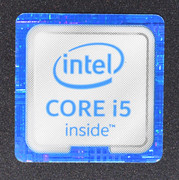
Intel's Core i5-6200U is strong enough for the most common applications. This processor has 2 physical cores that can process 4 threads simultaneously via Hyper-Threading technology. The Skylake CPU has a TDP of just 15 watts, which also reaps in plus point in battery life. The processor has a base clock of 2.3 GHz that can be boosted up to 2.8 GHz (1 core) or 2.7 GHz (2 cores) via Turbo mode. The performance of Intel's Core i5-6200U in our review sample is well-implemented. Comparing the Cinebench R15 rates shows that Lenovo's ThinkPad Yoga 460 is the fastest device based on Intel's Core i5-6200U. It cannot match the performance of an Intel Core i7-6500U. Devices powered by this CPU calculate approximately 10% faster.
| Cinebench R10 | |
| Rendering Single CPUs 64Bit | |
| Lenovo ThinkPad Yoga 460-20EM000QGE | |
| Lenovo Yoga 500-14ISK | |
| Rendering Multiple CPUs 64Bit | |
| Lenovo ThinkPad Yoga 460-20EM000QGE | |
| Lenovo Yoga 500-14ISK | |
| JetStream 1.1 - Total Score | |
| Acer Aspire R13 R7-372T-746N | |
| Acer Aspire R14 R5-471T-79GQ | |
| Lenovo ThinkPad Yoga 460-20EM000QGE | |
| Octane V2 - Total Score | |
| Lenovo Thinkpad X1 Yoga 20FQ-000QUS | |
| Acer Aspire R13 R7-372T-746N | |
| Acer Aspire R14 R5-471T-79GQ | |
| Lenovo ThinkPad Yoga 460-20EM000QGE | |
| HP Spectre x360 13-4104ng | |
| Lenovo Yoga 500-14ISK | |
| Mozilla Kraken 1.1 - Total | |
| Lenovo Yoga 500-14ISK | |
| HP Spectre x360 13-4104ng | |
| Lenovo ThinkPad Yoga 460-20EM000QGE | |
| Acer Aspire R14 R5-471T-79GQ | |
| Acer Aspire R13 R7-372T-746N | |
* ... smaller is better
System Performance
The performance of Lenovo's ThinkPad Yoga 460 is appealing and can cope with the average day at the office. Installing an SSD was definitely the right decision, and the user will notice performance potential of this system storage time and again. Prolonged waiting times or memory blackouts do not evolve. Everything runs smoothly and it is fun to work with the device. The PCMark 8 benchmark scores again underline the more than good implementation of the CPU's performance. The system performance of our review sample is quite able to compete with Lenovo's ThinkPad X1 Yoga based on an Intel Core i7-6500U. Acer's Aspire R14 R5 sets the standards here and can sometimes take a clear lead on Lenovo's ThinkPad Yoga 460. We determined the performance of the SD-card reader using our Toshiba Exceria Pro SDXC 64 GB UHS-II reference card. We copied 250 identical JPG files from the memory card onto the hard drive. The reader's average transfer rate was 131 MB/s thanks to UHS-II support, and consequently clearly above that of most comparison devices.
| PCMark 7 Score | 4676 points | |
| PCMark 8 Home Score Accelerated v2 | 3034 points | |
| PCMark 8 Creative Score Accelerated v2 | 3666 points | |
| PCMark 8 Work Score Accelerated v2 | 4199 points | |
Help | ||
Storage Device
Lenovo installs an SSD with a storage capacity of 256 GB in our review sample. To be precise, it is LiteOn's LCH-256V2S in the 2.5-inch format. The manufacturer's performance specs state up to 520 MB/s in sequential read and up to 290 MB/s in sequential write. We measure the performance using the AS SSD tool and achieve 499 MB/s in sequential read and 287 MB/s in sequential write. A good outcome that almost complies with the manufacturer's data.
Graphics Card
Intel's HD Graphics 520 serves as the graphics unit inside Lenovo's ThinkPad 460. The HD Graphics 520 has to access the system's working memory via the processor's interface for the lack of dedicated memory. Our review sample sports a DDR3 RAM module (1600 MHz). It thus only operates in single-channel mode, which has a negative impact on the performance of Intel's HD Graphics 520. The graphics unit supports DirectX 12 and can also decode videos using the modern H.265/HEVC codec.
The clock frequencies of Intel's HD Graphics 520 range from 300 - 1000 MHz. They are also dependent on the CPU. The frequencies can reach 300 - 1050 MHz in an Intel Core i7-6500U or Intel Core i7-6600U that Lenovo also offers for its ThinkPad Yoga 460. The 3DMark (2013) scores illustrate that this is a pure business device. Our Lenovo ThinkPad Yoga 460 barely manages to break away from the last place.
| 3DMark 06 - 1280x1024 Standard Score AA:0x AF:0x | |
| Acer Aspire R13 R7-372T-746N | |
| HP Spectre x360 13-4104ng | |
| Lenovo Yoga 500-14ISK | |
| Lenovo ThinkPad Yoga 460-20EM000QGE | |
| 3DMark 03 Standard | 14683 points | |
| 3DMark 05 Standard | 10120 points | |
| 3DMark 06 Standard Score | 6850 points | |
| 3DMark 11 Performance | 1290 points | |
| 3DMark Ice Storm Standard Score | 38427 points | |
| 3DMark Cloud Gate Standard Score | 4563 points | |
| 3DMark Fire Strike Score | 614 points | |
Help | ||
Gaming Performance
The gaming performance corresponds with the relatively poor outcome in the 3DMark benchmarks. The performance of Intel's HD Graphics 520 is not enough to render up-to-date games smoothly. Users who want to play an occasional game will have to use games from 2012 and earlier. Devices with a dedicated graphics card should be favored when more graphics power is needed. Here, Lenovo's ThinkPad Yoga 14 can demonstrate the advantages of the GeForce 840M.
Nevertheless, Intel's HD Graphics 520 does a good job. Its performance is definitely enough for its use in a business laptop.
| low | med. | high | ultra | |
|---|---|---|---|---|
| BioShock Infinite (2013) | 29.7 | 17.7 | 14.7 | 4.5 |
| Battlefield 4 (2013) | 31.4 | 23.9 | 13.4 | 3.8 |
| Rise of the Tomb Raider (2016) | 10.8 | 8.4 | 4.1 |
Emissions
System Noise
Lenovo's ThinkPad Yoga 460 is by far the quietest device in this comparison test. Consequently, there is absolutely no reason for complaint. The small fan is permanently disabled in idle mode. Thanks to the installed SSD, the device operates completely noiselessly. The fan is quickly enabled in load but is very quiet at 32.5 dB(A). The ear would have to be held close to the device to hear the fan spin.
Noise level
| Idle |
| 28.9 / 28.9 / 28.9 dB(A) |
| Load |
| 31.1 / 32.5 dB(A) |
 | ||
30 dB silent 40 dB(A) audible 50 dB(A) loud |
||
min: | ||
| Lenovo ThinkPad Yoga 460-20EM000QGE Intel Core i5-6200U, HD Graphics 520 | Lenovo ThinkPad Yoga 14 Intel Core i7-5500U, GeForce 840M | Lenovo Thinkpad X1 Yoga 20FQ-000QUS Intel Core i7-6500U, HD Graphics 520 | Lenovo Yoga 500-14ISK Intel Core i5-6200U, GeForce 920M | Acer Aspire R14 R5-471T-79GQ Intel Core i7-6500U, HD Graphics 520 | Acer Aspire R13 R7-372T-746N Intel Core i7-6500U, HD Graphics 520 | HP Spectre x360 13-4104ng Intel Core i5-6200U, HD Graphics 520 | |
|---|---|---|---|---|---|---|---|
| Noise | -4% | -4% | -16% | -10% | -13% | -11% | |
| off / environment * (dB) | 28.9 | 28.8 -0% | 31.3 -8% | 31.3 -8% | |||
| Idle Minimum * (dB) | 28.9 | 29.6 -2% | 28.8 -0% | 32.8 -13% | 31.75 -10% | 31.3 -8% | 29.6 -2% |
| Idle Average * (dB) | 28.9 | 29.6 -2% | 28.8 -0% | 32.8 -13% | 31.75 -10% | 31.3 -8% | 29.6 -2% |
| Idle Maximum * (dB) | 28.9 | 29.6 -2% | 28.8 -0% | 32.8 -13% | 31.75 -10% | 31.8 -10% | 34.6 -20% |
| Load Average * (dB) | 31.1 | 34.2 -10% | 35.2 -13% | 39.4 -27% | 34.8 -12% | 39.2 -26% | 34.7 -12% |
| Load Maximum * (dB) | 32.5 | 34.5 -6% | 35.2 -8% | 39.2 -21% | 34.8 -7% | 39.1 -20% | 37.9 -17% |
* ... smaller is better
Temperature
Compared with Lenovo's ThinkPad 14, our present review sample heats up a bit more during load. We measured a maximum of 48.8 °C on the underside, which is very palpable in prolonged use. That equals a plus of 1.4 °C over the former model. We achieved a maximum temperature of 39.5 °C on the upper side. The convertible reached just over 30 °C in idle mode. These are all good rates that should not cause disconcertment.
The processor reached a maximum temperature of 81 °C in the Prime95 program. At a clock rate of 2.6-2.7 GHz, the maximum possible performance is permanently available. The frequency only rarely dropped to 2.6 GHz. We measured a maximum temperature of 77 °C on the GPU. Intel's HD Graphics 520 stably clocked at a frequency of 950 MHz.
The low TDP of 15 watts was limiting in our stress test where the Prime95 and Furmark tools both run simultaneously for at least one hour. The GPU and CPU have to share these 15 watts. Thus, the processor clocked at a frequency of 1.5 GHz right from the start. The temperatures were slightly below the ascertained maximum rates. There was no difference between AC and battery modes in the stress test. We reran 3DMark 11 directly after the stress test and recorded a score of 1245 points. That equals approx. 3.5% less than after a cold start. Consequently, significant temperature-related disadvantages will not evolve in the long run.
(+) The maximum temperature on the upper side is 39.5 °C / 103 F, compared to the average of 35.4 °C / 96 F, ranging from 19.6 to 60 °C for the class Convertible.
(-) The bottom heats up to a maximum of 48.4 °C / 119 F, compared to the average of 36.8 °C / 98 F
(+) In idle usage, the average temperature for the upper side is 30.3 °C / 87 F, compared to the device average of 30.3 °C / 87 F.
(+) The palmrests and touchpad are cooler than skin temperature with a maximum of 30.8 °C / 87.4 F and are therefore cool to the touch.
(-) The average temperature of the palmrest area of similar devices was 27.9 °C / 82.2 F (-2.9 °C / -5.2 F).
Speakers
Both stereo speakers are installed in the convertible's underside on the sides. The sound is clear and sufficiently loud. However, low tones are absent. The speakers are well-suitable for video conferencing, as well as for short videos or music pieces. The sound can be customized to meet personal needs via the Dolby Audio software. The included program provides predefined profiles and an equalizer. However, users who do not want to waive first-rate sound enjoyment should connect external audio peripherals. Audio output using the stereo jack functioned impeccably.
Energy Management
Power Consumption
The favorable choice of components ensures a minimum idle consumption of only 3.6 watts. The short-term maximum consumption is 34.2 watts. Those are good rates for the processor's performance yield. On the other hand, a consumption of 0.35 watts measured in a completely shut down state is unfavorable.
A comparison with the other devices illustrates that Lenovo's ThinkPad Yoga 460 is very frugal with energy. All other review samples present a higher average consumption.
The small 45-watt power supply is sufficiently sized for Lenovo's ThinkPad Yoga 460.
| Lenovo ThinkPad Yoga 460-20EM000QGE HD Graphics 520, 6200U, Liteonit LCH-256V2S | Lenovo ThinkPad Yoga 14 GeForce 840M, 5500U, Samsung SSD PM851 512 GB MZ7TE512HMHP | Lenovo Thinkpad X1 Yoga 20FQ-000QUS HD Graphics 520, 6500U, Samsung SSD PM871 MZNLN512HCJH | Lenovo Yoga 500-14ISK GeForce 920M, 6200U, WDC Slim WD10SPCX-24HWST1 | Acer Aspire R14 R5-471T-79GQ HD Graphics 520, 6500U | Acer Aspire R13 R7-372T-746N HD Graphics 520, 6500U, Lite-On CV1-8B256 | HP Spectre x360 13-4104ng HD Graphics 520, 6200U, Samsung SSD PM851 256 GB MZNTE256HMHP | |
|---|---|---|---|---|---|---|---|
| Power Consumption | -7% | -48% | -45% | -5% | -38% | -3% | |
| Idle Minimum * (Watt) | 3.6 | 3.1 14% | 6.82 -89% | 6.6 -83% | 4 -11% | 6.2 -72% | 3.9 -8% |
| Idle Average * (Watt) | 6.9 | 7.2 -4% | 8.21 -19% | 10.6 -54% | 6.6 4% | 8 -16% | 7.4 -7% |
| Idle Maximum * (Watt) | 7.6 | 7.7 -1% | 17.55 -131% | 10.8 -42% | 8.6 -13% | 11.6 -53% | 9.2 -21% |
| Load Average * (Watt) | 28 | 36.2 -29% | 28.81 -3% | 37 -32% | 30.5 -9% | 40 -43% | 28.1 -0% |
| Load Maximum * (Watt) | 34.2 | 38.5 -13% | 34.07 -0% | 39 -14% | 32.2 6% | 36.6 -7% | 27.6 19% |
* ... smaller is better
| Off / Standby | |
| Idle | |
| Load |
|
Key:
min: | |
Battery Runtime
The 3-cell, lithium-polymer battery has a capacity of 53 Wh. That is marginally lower than in Lenovo's ThinkPad Yoga 14 and HP's Spectre x360 13 (both 56 Wh). The low power consumption, however, still leads to decent runtimes. A charged battery is enough for 2:22 hours of full load. Our Wi-Fi test, where different websites are opened every 30 seconds, is more realistic. Here, the "Balanced" profile is enabled and the screen's brightness is set to approximately 150 cd/m², which means reducing the screen brightness by 2 levels. Lenovo's ThinkPad Yoga 460 achieves a good runtime of 7:38 hours here and places itself in second place behind HP's Spectre x360 13 that lasts 42 minutes longer.
| Lenovo ThinkPad Yoga 460-20EM000QGE 53 Wh | Lenovo ThinkPad Yoga 14 56 Wh | Lenovo Thinkpad X1 Yoga 20FQ-000QUS 52 Wh | Lenovo Yoga 500-14ISK 30 Wh | Acer Aspire R14 R5-471T-79GQ 50 Wh | Acer Aspire R13 R7-372T-746N 49 Wh | HP Spectre x360 13-4104ng 56 Wh | |
|---|---|---|---|---|---|---|---|
| Battery runtime | 12% | -0% | -55% | -1% | -16% | 9% | |
| Reader / Idle (h) | 11.2 | 12.5 12% | 15.4 38% | 5.3 -53% | 11.2 0% | ||
| H.264 (h) | 7 | 6.6 -6% | |||||
| WiFi v1.3 (h) | 7.6 | 5.9 -22% | 2.8 -63% | 7.5 -1% | 6.4 -16% | 8.3 9% | |
| Load (h) | 2.4 | 2 -17% | 1.2 -50% | 1.4 -42% | |||
| WiFi (h) | 5.9 |
Pros
Cons
Verdict
Lenovo's ThinkPad Yoga 460 is an enduring 14-inch convertible made for business routine. Thanks to the new Skylake processors, the performance has been increased by about 10% compared with the former lineup based on Broadwell CPUs. However, a business convertible that weighs almost 2 kilograms and is not a bargain at a purchase price of 1300 Euros (~$1477) will have a hard time convincing buyers.
The design of Lenovo's ThinkPad Yoga 460 is unmistakable and the quality is on a high standard.
Nevertheless, Lenovo's ThinkPad Yoga 460 has quite a bit to offer. The slim, straightforward casing features a very good build and does not give reason for complaint. The device's good input devices including TrackPoint and stylus (ThinkPad Pen Pro) for the multi-touchscreen also convinced us. The keyboard's clever lock mechanism, for example in Tablet Mode, is good and it also protects against damage. The screen is impressive and viewing-angle stable. The surface's finish reduces reflections indoors and out. On the other hand, the maximum brightness could be much higher for a convertible. The different modes of use that also speak for Lenovo's ThinkPad Yoga 460 might be more decisive for purchasing the convertible. Should this versatility not be needed, then a conventional ultrabook might be the better choice in some cases.
Lenovo ThinkPad Yoga 460-20EM000QGE
- 05/27/2016 v5.1 (old)
Sebastian Bade




